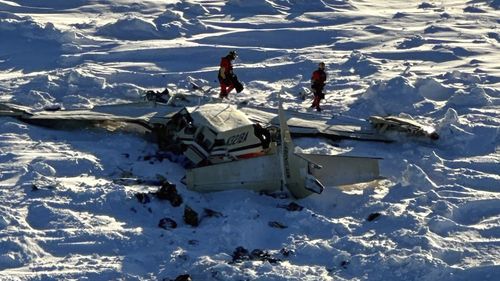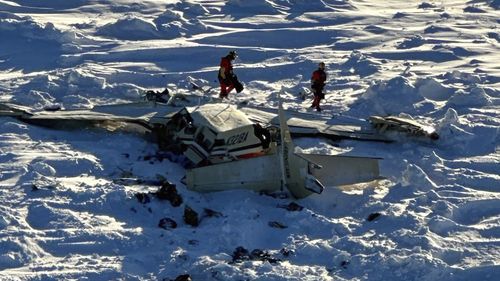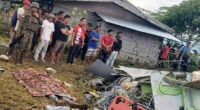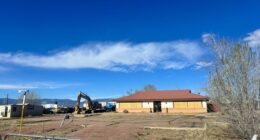The Nome Search and Rescue team is ready to assist in the recovery operations of the aircraft once the Bering Air crew completes their work.

Learning how the accident unfolded
Investigators are working to determine the cause of the crash –– and how the aircraft suddenly dropped in elevation and speed.
Analysing air traffic control data will be key to the National Transportation Safety Board’s probe, officials said.
During a news conference on Saturday, NTSB Chair Jennifer Homendy mentioned that there are nine NTSB members on-site, supported by twelve specialists from Washington, DC.
“Please understand there’s some difficult conditions, because this is on an ice floe, which is moving about five miles a day,” she added.
The Cessna aircraft, operated by Bering Air, was about 19km offshore when its position was lost, according to the Coast Guard.
Coast Guard Lt. Commander Benjamin McIntyre-Coble reported that the plane experienced a sudden and sharp decrease in altitude and speed around 3:18 pm on Thursday due to an unknown event.
The search for the aircraft had been complicated by multiple factors, including inclement weather as well as the missing plane had not communicated its position through an emergency transmitter, officials said.
Visibility was better for searchers on Friday morning:
The sky was clear at Nome Airport around 10am, with temperatures of around -15 degrees.
The National Guard and Coast Guard added helicopter search teams to the effort Friday morning, while another Coast Guard C-130 landed in Nome to assist with the search, the fire department said.
A small community accustomed to flying mourns
At a vigil hosted by the city of Nome on Friday, Amanda Snyder, pastor at Our Savior’s Lutheran Church, urged those in attendance to lean on each other for support.
“Please do not isolate yourself in your grief. In the coming days, in the weeks, as we begin to hear of which families are impacted, our hearts are going to break over and over, and it’s okay to mourn and grief, but please do not isolate,” Snyder said.
“Words can’t express the loss we’re all feeling, we’re all connected in so many ways,” said Alaska Sen. Lisa Murkowski, who joined the vigil via video conference.
“It’s hard to accept the reality of our loss.”
It is not unusual for Alaskans to travel between places by small plane due to the vast landscape and lack of transportation infrastructure available.
Rhone Baumgartner and Kameron Hartvigson were two employees from Alaska Native Tribal Health Consortium who travelled to Unalakleet “to service a heat recovery system that is critical to the community’s water plant,” the nonprofit said on Friday night.
“Rhone Baumgartner and Kameron Hartvigson were passionate about the work they did, cared deeply for the communities they served, and made a lasting impact on rural communities across our state,” Natasha Singh, ANTHC interim president and CEO, said in a statement.
“They were the best at what they did and had just flown into Unalakleet to help address heating and mechanical issues in the depths of winter.
They gave the ultimate sacrifice for the people we serve in the work we do.”
Homendy said she understands how tragic the crash is to the area.
“The NTSB knows that villages like Nome and Alaska aviation are tight-knit communities, so this tragedy affects so many,” she said on Saturday.
“Please know that we’ll work diligently to determine how this happened, with the ultimate goal of improving safety here in Alaska and across the United States.”








